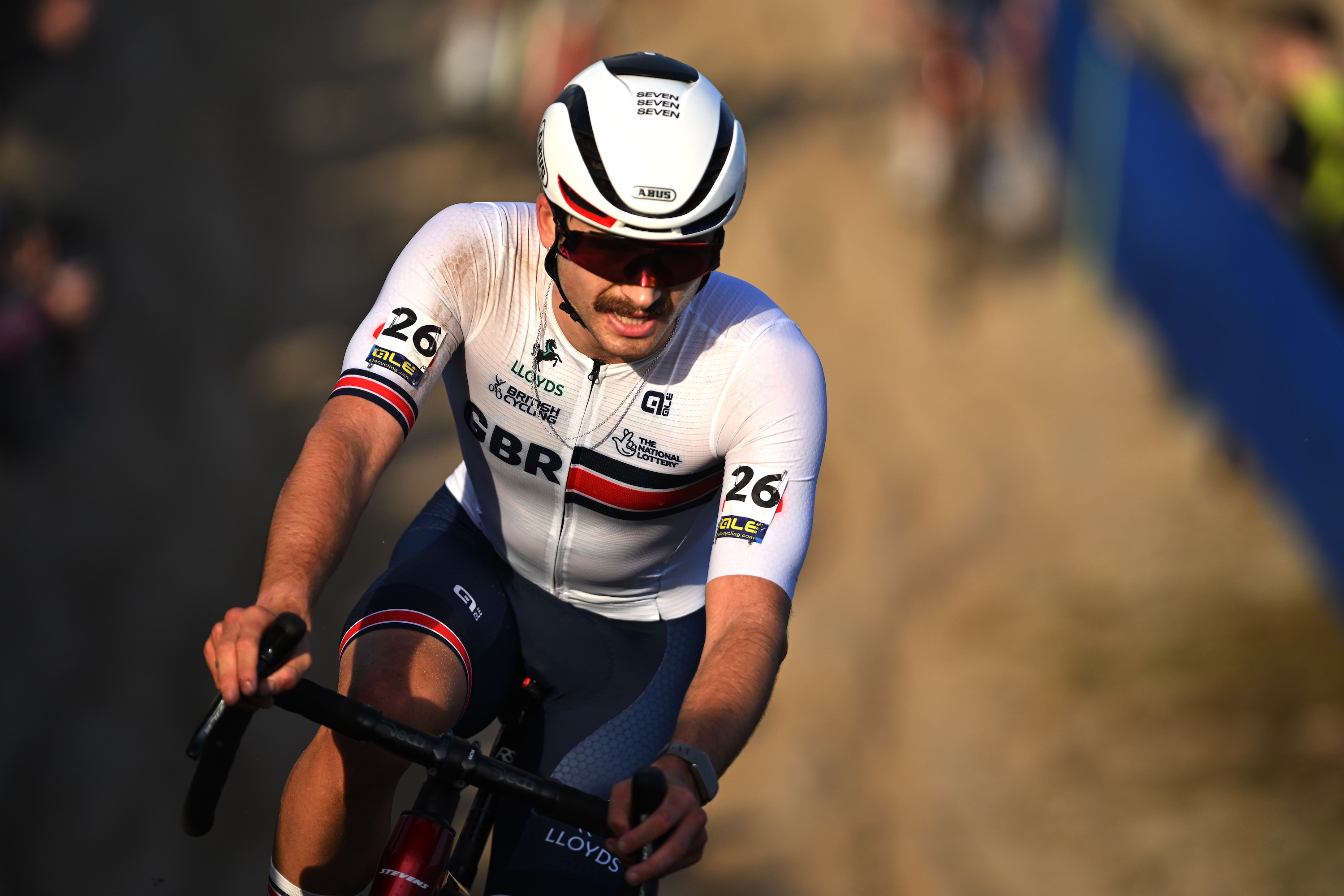'We're not racing gravel or mountain bike': the traditional cyclo-cross set-up is there for a reason, says British CX star
To some, the 33mm cyclo-cross tyre limit might look impractical and old-fashioned – but those people might be confusing CX with another sport


Cycling as a sport is based very much on tradition – traditional practices, races and a traditional aesthetic. For many of us this is something we love – after all, who hasn't gazed just a little bit longingly at a classic racing bike from, say, 50 years ago, dripping with chrome and history.
Of course, there are times when we roll our eyes and wish the sport would get with the programme. The UCI's attempt, ultimately abandoned, to press rewind on the Hour record and standardise all bikes and equipment to Eddy Merckx's 1972 ride, is the perfect example.
Amateur cyclo-cross though, with its on-the-day entry, come-one-come-all attitude and themed fun races, was different to the rest. It was the young punk in a room of monocled fuddy-duddies, bucking trends and always doing the unexpected.
But now gravel has arrived, all big fat tyres and super laid-back vibes, and cyclo-cross is starting to look a little traditional again, at least at the elite level.
Ensuring that cross doesn't turn into mountain biking or gravel riding is one of the main things that has kept cross bikes looking like cross bikes, reckons GB and Seven Racing cyclo-cross rider Cameron Mason.
The Scot, who was recently fifth in the European Cross Championships, told Cycling Weekly that it would "definitely be an advantage" in practical terms to be able to use gravel-sized tyres of 40mm and upwards in cyclo-cross, but added: "I don't know if it would be an advantage to the sport. There's the tradition of it, and I think that's one important thing will keep cyclo-cross cyclo-cross, and make sure it doesn't turn into mountain bike or doesn't turn into gravel riding."
What's more, the UCI rules are very specific, stating, "For the cyclo-cross the width of the tyre (measured between the widest parts) shall not exceed 33mm."
The latest race content, interviews, features, reviews and expert buying guides, direct to your inbox!
"That's why, like, yeah, that's the main reason why our technology hasn't changed for 10 years is because the tyre width hasn't changed, so they haven't had to change," Mason says.
It might also come as a surprise to some that in the muddy world of cross, Mason and his Seven Racing team-mates are using a Shimano Dura-Ace 12-speed double-ring road groupset. Given some WorldTour teams have even experimented with single-ring set-ups in the Classics, it feels as though they would be a given in CX.
"Two by 12 is probably the most versatile set-up," says Mason. "We've got the most range, but it's quite close range – though we'll often do full races in the big ring, just the way that the gearing is set up."
Given how early eagerly cyclo-cross came to the table when it came to disc brakes, it might come as a surprise how traditional some of the other components are. However, it doesn't apply across the board, with plenty of riders using gravel frames and tubeless too. However, the latter, says Mason, is not necessarily an advantage.
"There doesn't seem to be a performance gain or loss," he says. "It's more a sponsor thing and a cost thing. There are benefits, because you can change tyres a lot easier than tubulars.
"But the punctures we're getting aren't going to be helped that much by the tubeless because there's just not enough tyre volume," Mason adds. "We're literally running 17psi with 33mm tyres. There's just not much air to seal it."
There are other, valid reasons that cross has not jumped straight on to the latest technology, explains Mason.
He is considering a move to shorter 165mm cranks from his current 170mm set-up, he says, but is currently carefully working out exactly how it – and the ensuing change in saddle height – might affect the torque he can put out and his ability to push power over the back wheel. It's not just a case of blindly going with the latest fad.
There are the practicalities, too, of swapping various bits of kit from one rider to the next on what is a big team (Seven Racing is part of the Alpecin-Deceuninck set-up).
"Our team is so big that it's quite standardised, to make spare parts easier and bike builds, because there's just so much equipment involved. I have five CX bikes at the moment, and they're all identical. And if you change something on one bike, you've got to sit down and do it with all of them. This is my third year on this set-up, and they just feel like an extension of me."
Mason rides with Alpecin-Deceuninck Development Team during the road season, and can regularly be seen on gravel and mountain bikes too. But his heart clearly lies with cyclo-cross.
Returning to those gravel-sized tyres, he says: "On some courses, we'd also go faster on a mountain bike – but we're not doing mountain bike racing. So these rules have to be in there just to keep cyclo-cross cyclo-cross, otherwise it turns in something else."
After cutting his teeth on local and national newspapers, James began at Cycling Weekly as a sub-editor in 2000 when the current office was literally all fields.
Eventually becoming chief sub-editor, in 2016 he switched to the job of full-time writer, and covers news, racing and features.
He has worked at a variety of races, from the Classics to the Giro d'Italia – and this year will be his seventh Tour de France.
A lifelong cyclist and cycling fan, James's racing days (and most of his fitness) are now behind him. But he still rides regularly, both on the road and on the gravelly stuff.
You must confirm your public display name before commenting
Please logout and then login again, you will then be prompted to enter your display name.
